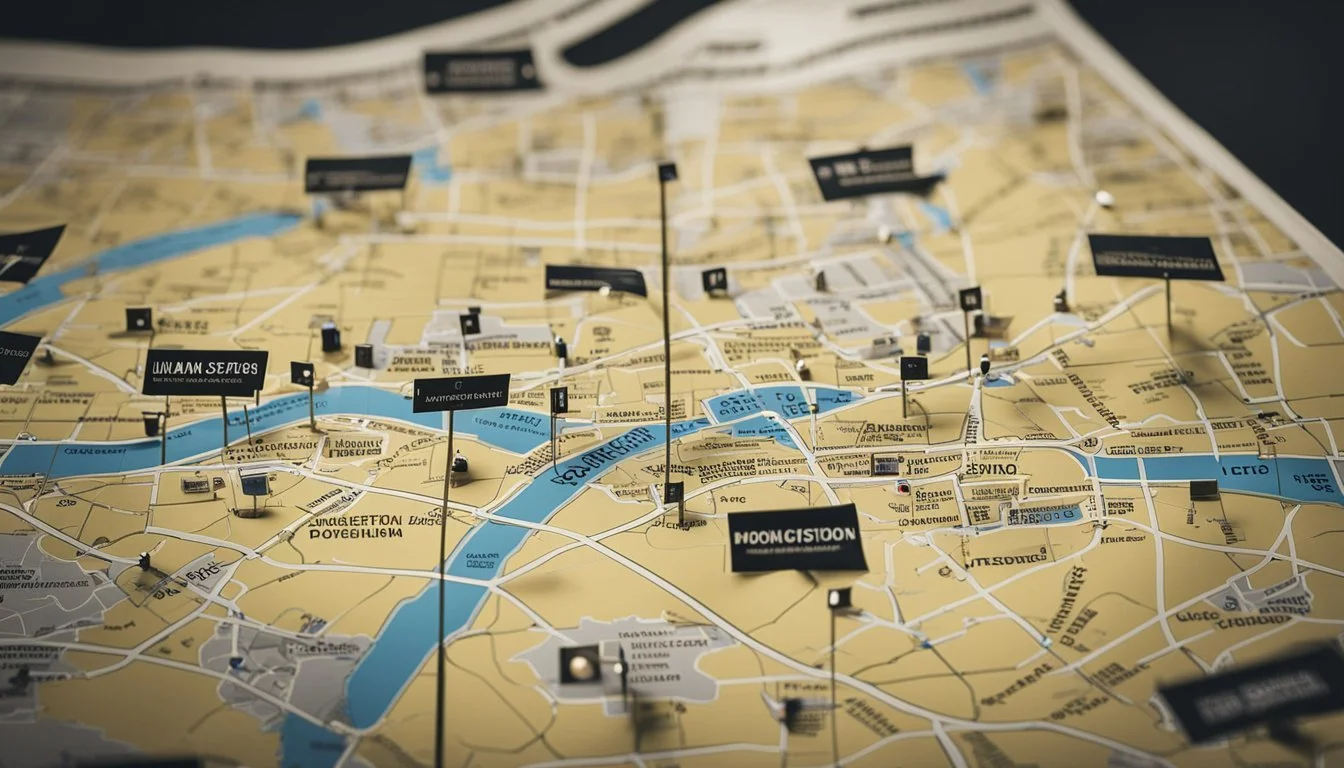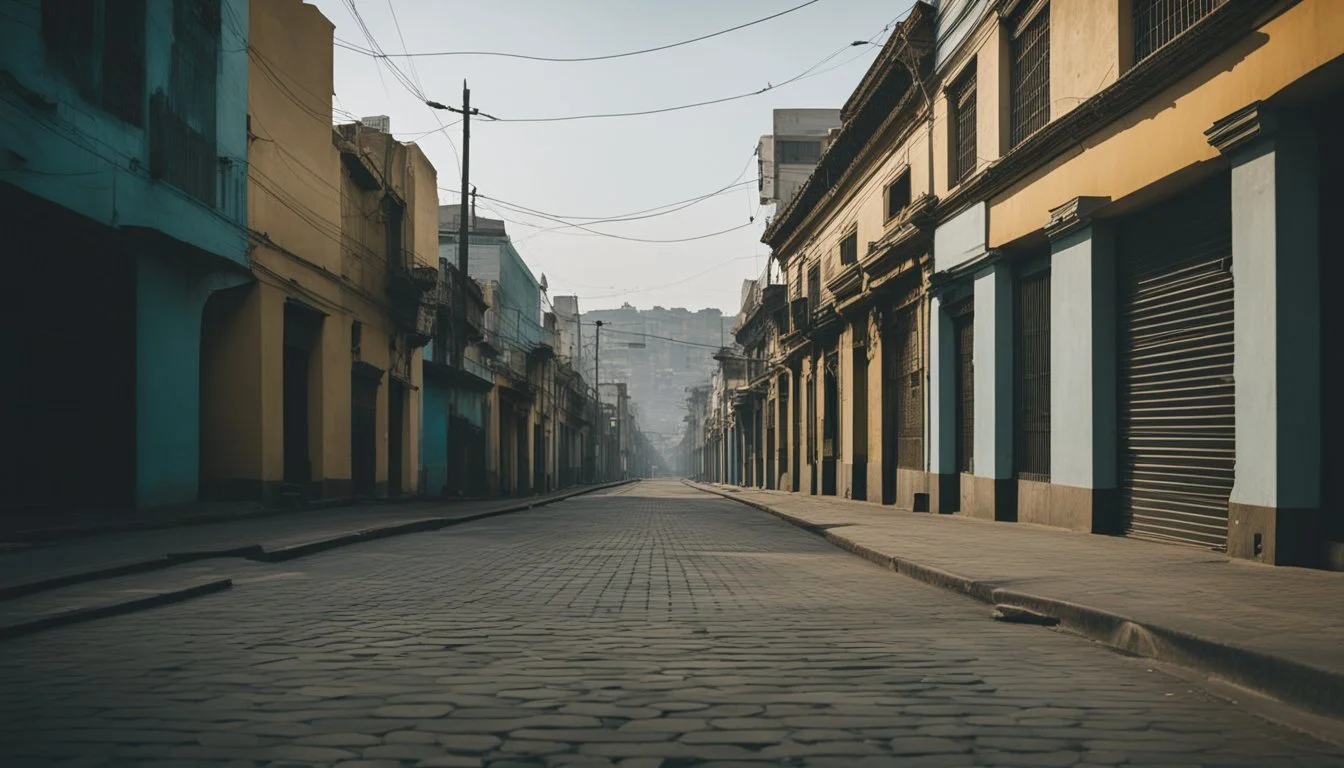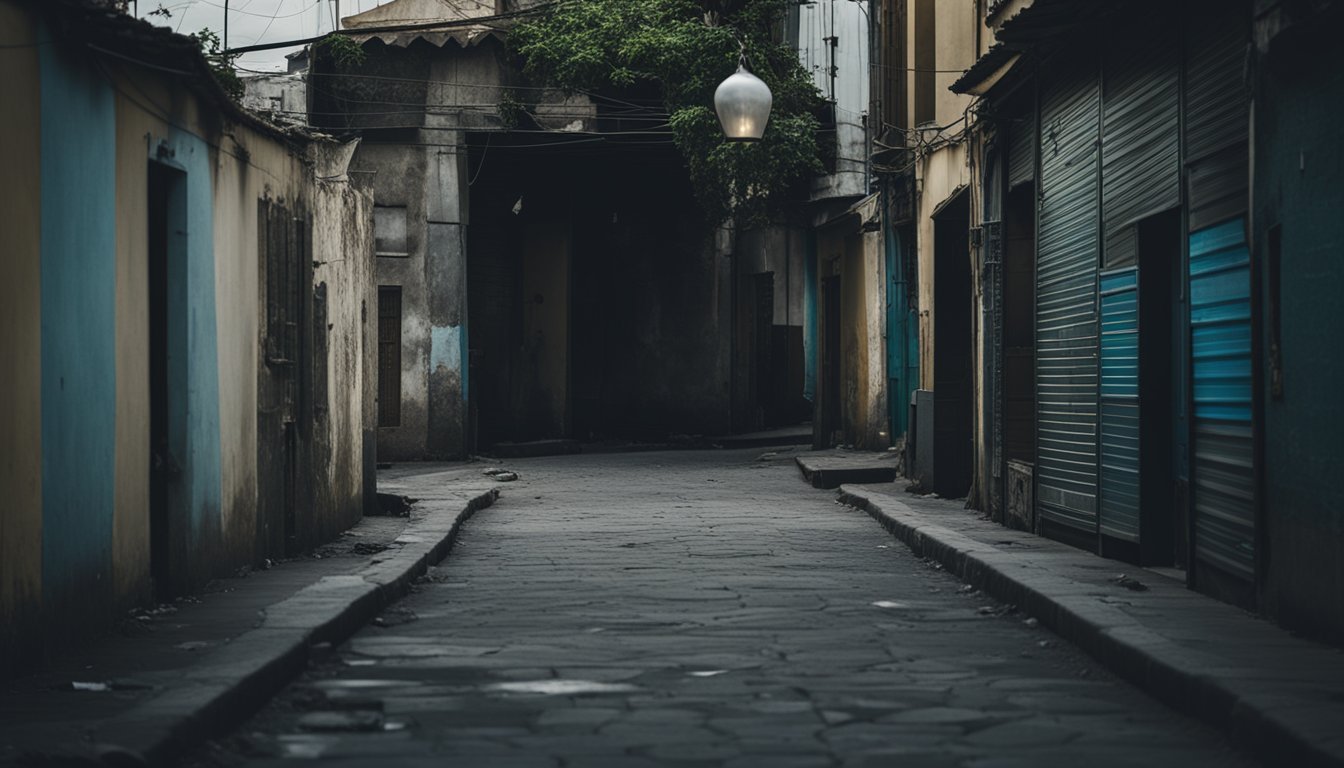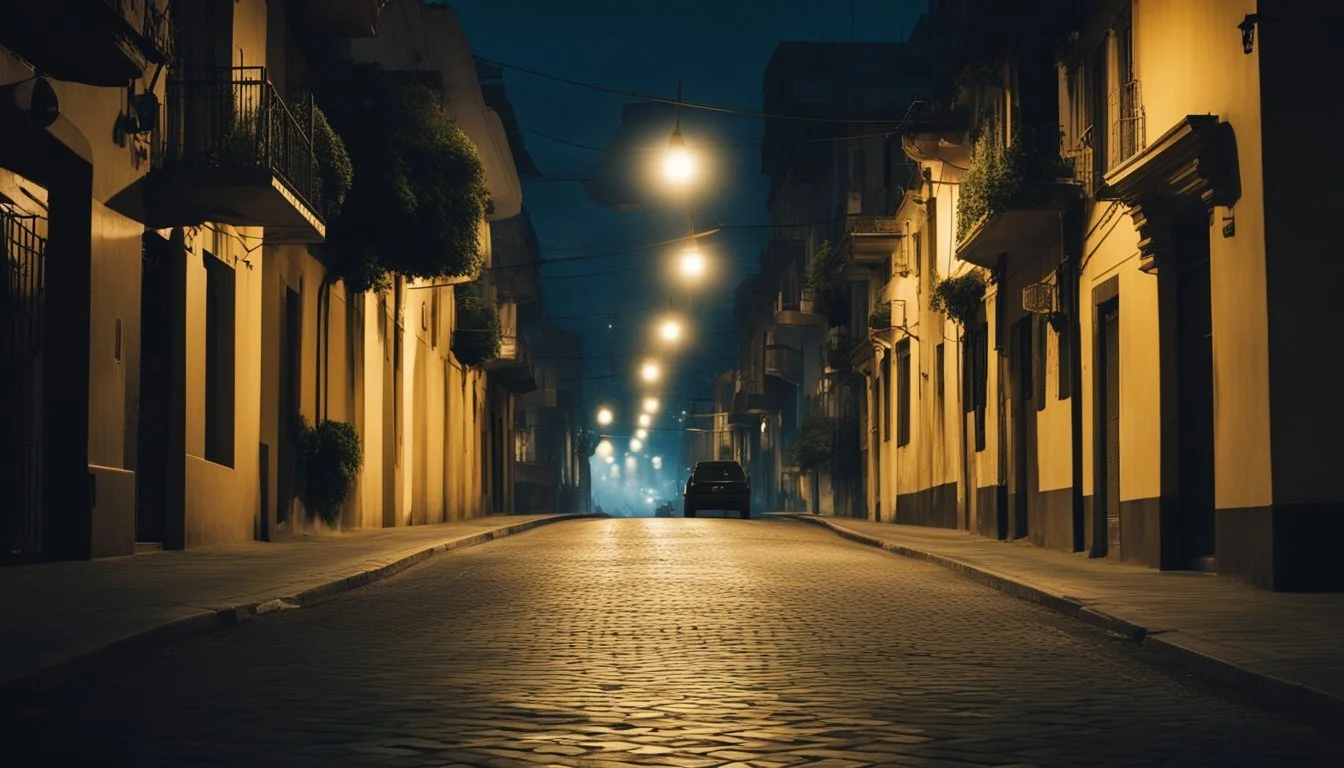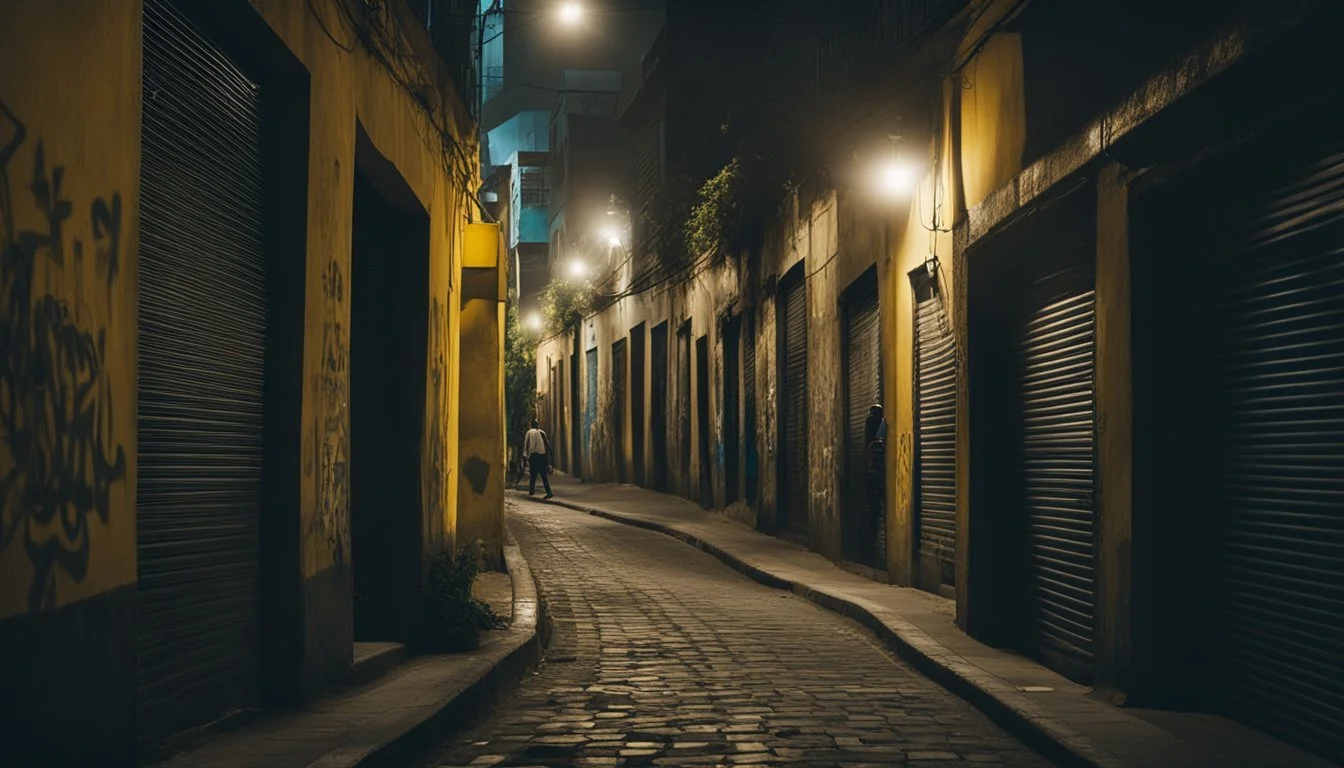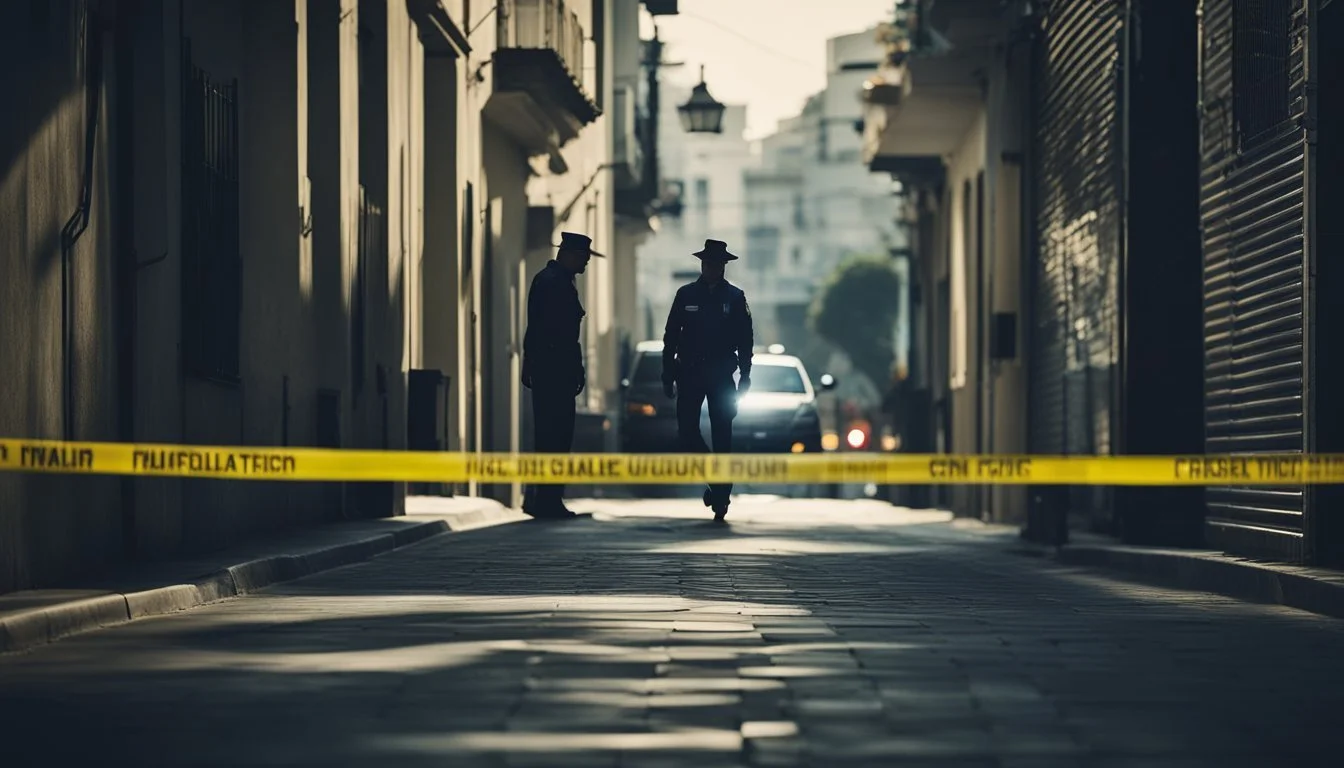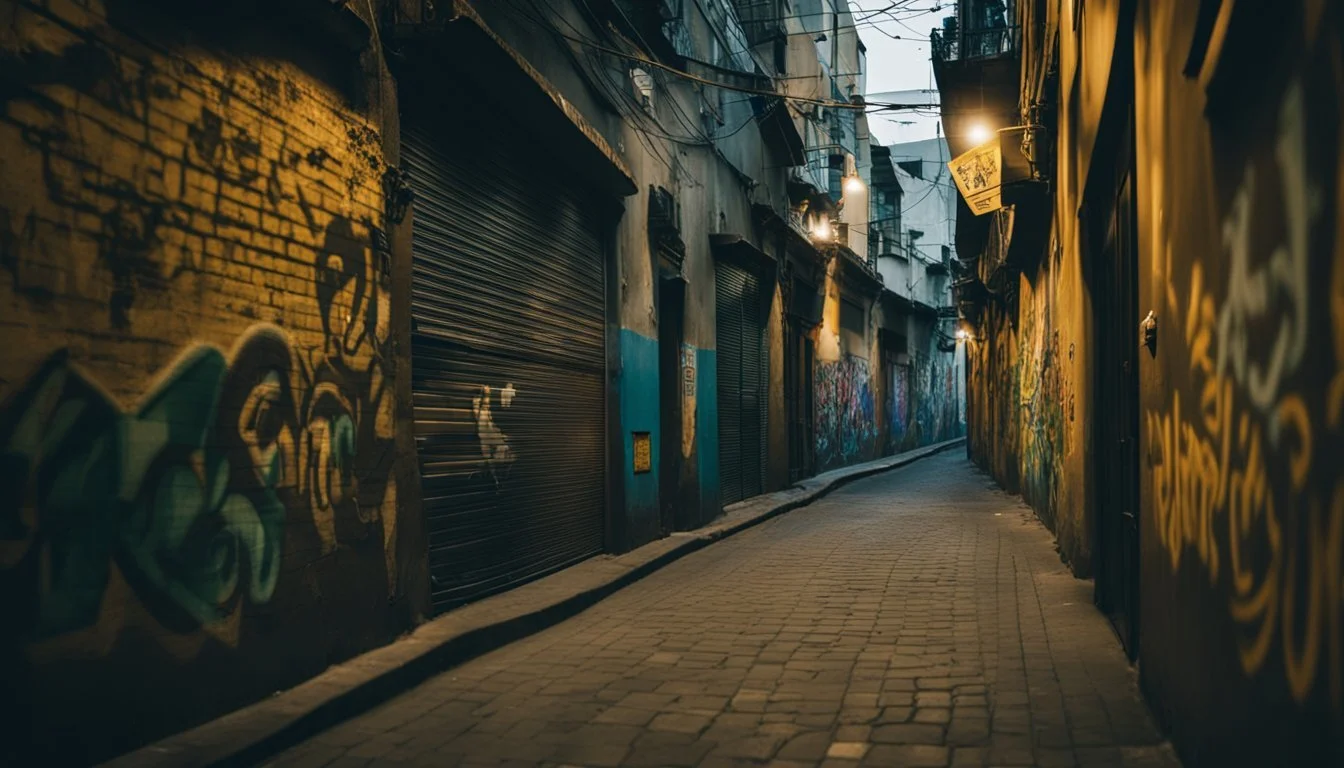8 True Crime Documentaries Set in Lima
Exploring the City's Darker Side
True crime documentaries have captivated audiences worldwide with their intense storytelling and real-life drama. These gripping narratives often reveal the darkest facets of human nature, leaving viewers both stunned and intrigued.
What makes these documentaries particularly fascinating is their ability to uncover the hidden stories behind infamous crimes. This article delves into eight true crime documentaries set in Lima, shedding light on the city's intriguing criminal history.
1) The Vanished in Lima (1992)
Set in the bustling city of Lima, this documentary explores the unsettling disappearance of multiple individuals amidst political turmoil. It offers a meticulous investigation into the lives altered and families torn apart by these vanishments. The film delves into the challenges faced by local law enforcement and communities.
Through interviews with family members, law enforcement officials, and urban experts, it provides a thorough look into the societal impact of these disappearances. The documentary also highlights the complex interplay between political instability and crime in Lima during the early 1990s.
Rich with archival footage and personal testimonies, "The Vanished in Lima" paints a vivid picture of a city grappling with uncertainty and fear. This film remains a significant reference point for those interested in true crime and urban studies.
2) Lima's Lost Souls
"Lima's Lost Souls" is a haunting documentary that explores the dark underbelly of Lima, Peru. This film delves into the myriad of unsolved cases and mysterious disappearances that have plagued the city over the years.
It follows the tireless efforts of local investigators and journalists as they attempt to uncover the truth behind these disappearances.
The documentary provides an intimate look at the lives of the affected families, their struggles, and their unyielding quest for justice. It sheds light on the broader social and economic issues contributing to the perpetuation of these crimes.
Through interviews and archival footage, "Lima's Lost Souls" paints a grim picture of a city battling against time and bureaucracy to bring closure to bereaved families.
For more information, visit the IMDb page of the documentary.
3) Mystery of San Juan de Lurigancho
San Juan de Lurigancho, a district on the outskirts of Lima, has gained notoriety due to various criminal activities and its association with true crime documentaries. It is one of the most populous districts in Peru, housing over 10% of Lima's population.
Though diverse in its socio-economic spectrum, parts of San Juan de Lurigancho face significant challenges, including urban poverty and crime.
One of the most gripping stories from this area involves the infamous Miguel Castro Castro prison, located in the district. Known for its high-profile inmates and dramatic escape attempts, this prison has been a focal point in several true crime documentaries.
One such documentary reveals a wild prison break planned by high-level cartel members, showcasing the complex and often dangerous dynamics within the penitentiary system.
These films provide a detailed exploration of the criminal elements and the law enforcement efforts in this densely populated area. It paints a vivid picture of the challenges faced by the residents and authorities alike.
For more details on a documentary that covers these themes, see "How Bosses from Four Cocaine Cartels Planned a Wild Prison Break" (2021).
4) Lima Night Terror
"Lima Night Terror" (2019) explores the frightening events surrounding a series of unsolved murders in the capital city of Peru. This documentary offers a chilling look into the city's underbelly, where shadows conceal secrets and danger lurks at every corner.
The film captures the despair and fear that gripped the residents during these trying times. It follows the relentless efforts of local law enforcement to track down the perpetrators, offering viewers a glimpse into the challenges faced by the police force.
Through interviews with survivors and families of the victims, "Lima Night Terror" provides a humanizing aspect to the otherwise grim story. Their testimonies paint a vivid picture of the trauma left in the wake of such heinous crimes.
The documentary is notable for its meticulous attention to detail, recreating the harrowing atmosphere of Lima at night and the constant tension that permeated the city streets. It emphasizes the impact of crime on both individual lives and the broader community.
For more information on "Lima Night Terror," visit the IMDb page here.
5) The Ghosts of Barranco
"The Ghosts of Barranco" (2019) takes viewers deep into the historic and bohemian district of Barranco in Lima, Peru. Known for its vibrant arts scene, the area hides a darker side filled with tales of unsolved crimes and ominous mysteries.
The documentary sheds light on a series of disappearances and murders that remain shrouded in secrecy. Through interviews with local historians, residents, and law enforcement, it pieces together the chilling narratives that the picturesque streets conceal.
A significant portion of the film focuses on the infamous "Bridge of Sighs." This iconic landmark, long celebrated for its romantic lore, becomes a haunting backdrop for the sinister events explored in the documentary. Local legends and eye-witness accounts add layers of intrigue.
The filmmakers employ stark visuals and haunting reenactments to recreate the atmosphere of fear that blanketed Barranco during these unsettling times. The use of archival footage and contemporary interviews helps ground the story in reality, making it both compelling and believable.
Each revelation peels back another layer of the quiet neighborhood, transforming it from a tourist attraction into a stage for real-life horror. The documentary's meticulous research and poignant storytelling provide an unforgettable look into Barranco's hidden terrors.
For more information on "The Ghosts of Barranco," visit IMDB or Wikipedia.
6) Unsolved in Miraflores
Miraflores, one of Lima's most affluent districts, has its share of unsolved mysteries.
This documentary explores a series of chilling and unresolved crimes, plunging into the details of cases that continue to baffle authorities.
From unexplained disappearances to unsolved murders, the film presents firsthand accounts from investigators, family members, and witnesses.
Each story unfolds against the backdrop of Miraflores, highlighting the contrast between its picturesque scenery and the sinister events that have taken place.
The narrative is gripping, keeping viewers on edge as they ponder who might be responsible.
For more information, visit IMDb.
7) The Dark Side of Lima
Lima, the capital of Peru, has been the backdrop for numerous true crime documentaries showcasing its complex history and darker undertones.
"The Dark Side of Lima" (2021) explores the unsettling events that unfolded in this vibrant city. The documentary delves into the infamous La Cantuta massacre and the atrocities committed during Peru's internal conflict.
Another significant case featured is the Barrios Altos massacre, illustrating the impact of political violence on the local populace. The documentary offers a stark portrayal of the human rights abuses during the 1980s and 1990s.
Both stories highlight the struggles of victims' families seeking justice amidst a backdrop of political turmoil and corruption. Their quest for accountability adds depth to Lima's dark historical narrative.
For more on "The Dark Side of Lima," see IMDb.
8) Secrets of Magdalena del Mar (2023)
"Secrets of Magdalena del Mar" takes viewers deep into the iconic district of Lima, known for its picturesque coastline and rich history. The documentary uncovers a series of chilling crimes that have haunted this seemingly peaceful area.
Magdalena del Mar, with its serene beaches and vibrant community, becomes the backdrop for unraveling dark secrets. The film investigates a series of mysterious disappearances and unsolved murders that have left residents in fear and authorities baffled.
Directed by veteran filmmaker Lucia Ramirez, the documentary blends archival footage, interviews with local historians, and gripping reenactments to tell the stories of the victims. Key figures, including investigators and witnesses, provide firsthand accounts that add depth to the narrative.
The documentary sheds light on how these events have shaped the community, revealing a complex web of intrigue and tragedy. Through its detailed exploration, it provides a compelling look at the intersection of crime and culture in one of Lima's most beloved districts.
For more information, visit the Wikipedia page or IMDB.
Historical Context of Crime in Lima
The crime rates in Lima have been influenced by various historical events and socioeconomic factors. The following sections offer a detailed look at the key criminal events and the underlying socioeconomic conditions that have shaped crime in Lima.
Key Criminal Events in History
Lima's history of crime includes multiple significant events that have left a lasting impact on the city. Major criminal incidents in Lima span from notorious gang activities to politically motivated crimes. One notable event was the rampant gang violence in the 1990s, leading to heightened insecurity in the city.
Another key event was the rise of drug trafficking networks in the late 20th century. These networks often used Lima as a transit point, contributing to an increase in local crime rates. Additionally, political unrest during the late 1980s and 1990s led to various acts of terrorism. Groups like Shining Path carried out bombings and assassinations, creating a climate of fear and instability.
Socioeconomic Factors
Socioeconomic conditions are crucial in explaining the crime patterns in Lima. Poverty and unemployment have historically been significant factors in driving crime rates. Lima, like many other cities, has struggled with imbalance in wealth distribution. High levels of poverty concentrate in specific districts, contributing to higher crime rates in these areas.
Education and access to social services also play a role. Areas with limited access to quality education and healthcare often experience higher crime rates. Economic opportunities are unevenly distributed, leading to discrepancies in quality of life. This lack of opportunity and essential services fosters an environment where crime can thrive, as individuals may turn to illegal activities to survive.
Legal Framework and Law Enforcement
The legal framework in Lima centers around its policing challenges and the role played by the judicial system in resolving crimes, including those that involve intricate and high-profile criminal cases. Understanding these elements is crucial to grasp the complexities involved in criminal justice in Lima.
Policing Challenges
Lima's law enforcement agencies face numerous challenges in their operations. High crime rates, resource limitations, and public distrust significantly impact their efficacy. The metropolitan police force often struggles with insufficient funding, resulting in outdated equipment and inadequate training for officers.
Crime hotspots, especially in lower-income areas, present persistent difficulties in maintaining order and safety. Organized crime syndicates and drug trafficking further compound the problem, making it difficult for law enforcement to execute their duties effectively. Efforts to curb corruption within the police force also remain a significant hurdle.
Collaborative initiatives with international policing bodies have been used to bolster local efforts, but these solutions are frequently short-term. Continued investment in community policing and technology is essential to overcoming these challenges.
Judicial System's Role
The judicial system in Lima plays a pivotal role in adjudicating crimes and ensuring justice is served. However, it is often hampered by systemic delays and bureaucratic inefficiencies. Cases frequently backlog, prolonging the legal process and creating a strain on the courts.
Judges and prosecutors work under intense pressure, balancing a high volume of cases with limited resources. The interplay between law enforcement and the judiciary requires seamless coordination, but often, miscommunications and procedural errors disrupt this balance.
Reform initiatives focusing on streamlining legal processes and enhancing judicial training have been introduced, with varying degrees of success. Ensuring fair trials and due process remains a cornerstone of the judicial system's responsibilities amidst these challenges.

